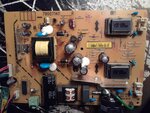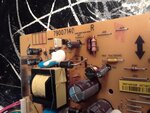Rusthugger
Newbie level 4

Ya. Mine is burnt out. I need to identify it so I can replace it.
If you have a schematic for this monitor, could you glance at it to tell me the industry standard or manafacturer's part number for this diode? I mean, some ID that will help me obtain a replacement?
If you have a schematic for this monitor, could you glance at it to tell me the industry standard or manafacturer's part number for this diode? I mean, some ID that will help me obtain a replacement?






